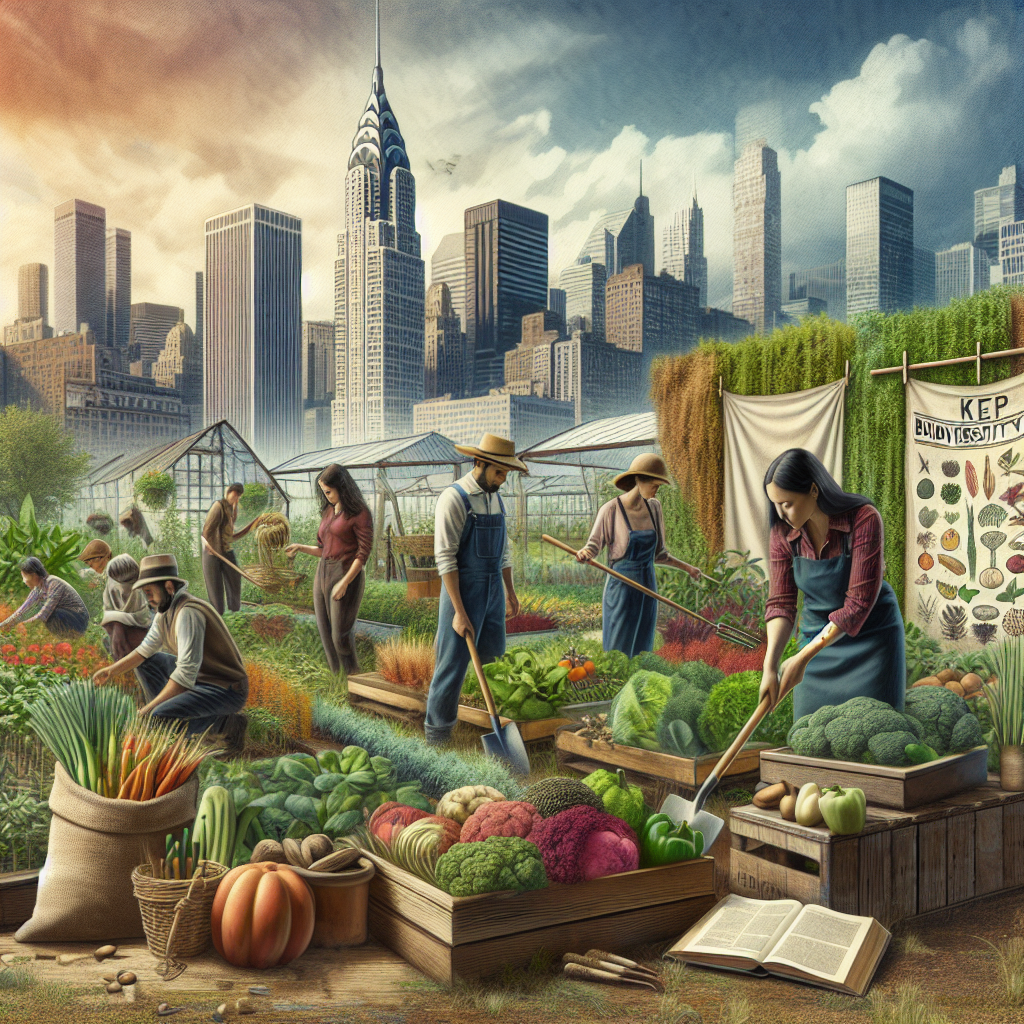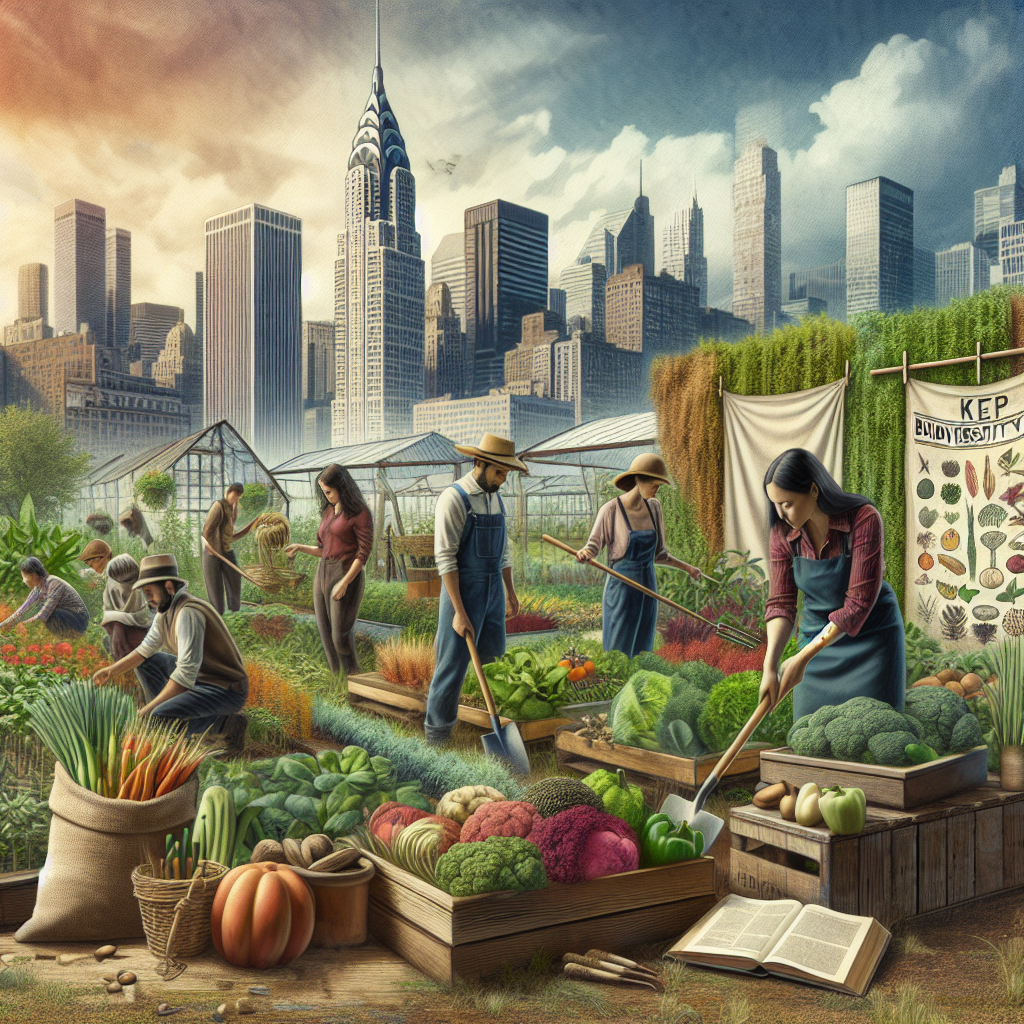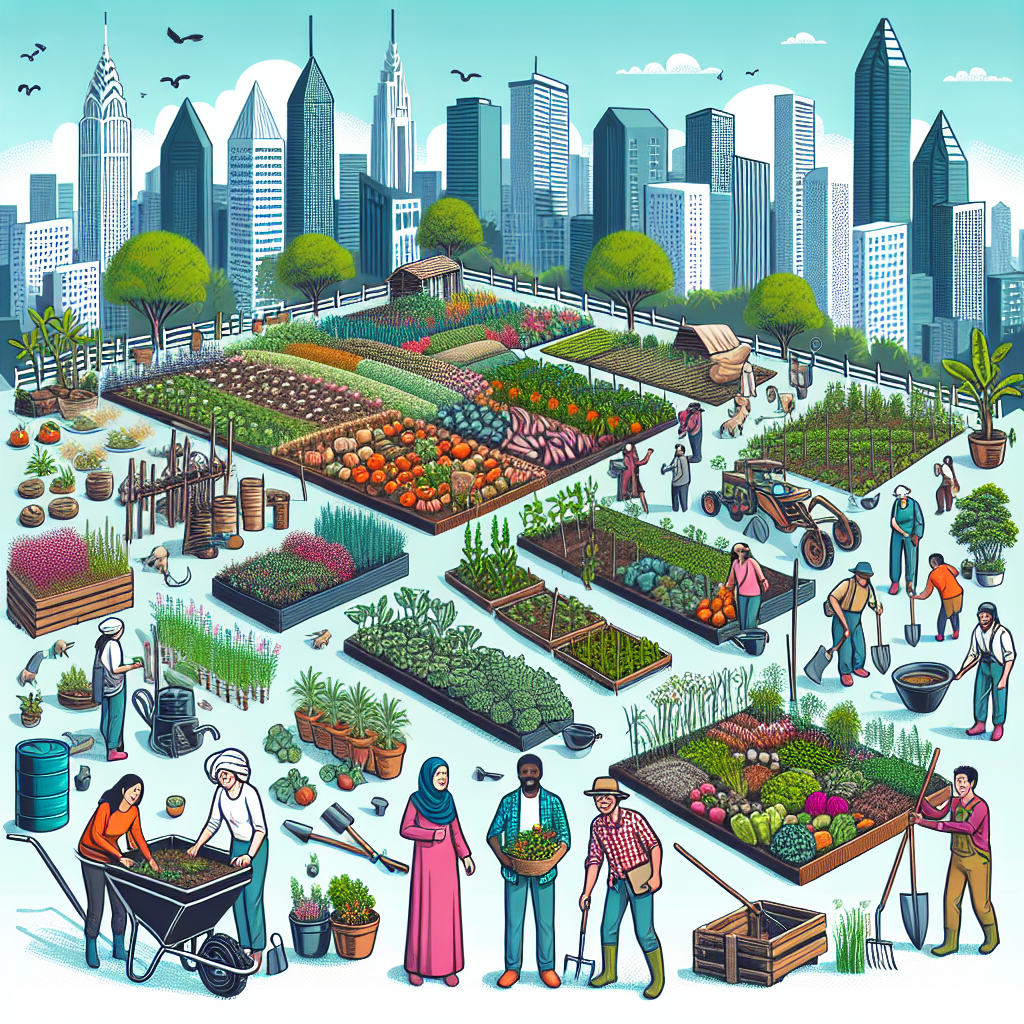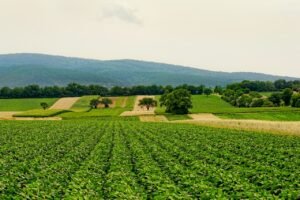
Imagine strolling through a bustling city, with skyscrapers reaching towards the sky and traffic noises filling the air. Now, picture vibrant green spaces nestled amidst the urban landscape, alive with the colors and flavors of heritage and heirloom crops. Urban farming, the practice of cultivating crops in urban areas, has emerged as a powerful tool in preserving these treasured varieties of fruits, vegetables, and grains. Not only does it provide sustainable food sources and foster a sense of community, but it also plays a crucial role in safeguarding our agricultural heritage for future generations. So, let’s take a closer look at how urban farming is championing the preservation of these precious plants and the stories they hold.
Defining Heritage and Heirloom Crops
Heritage and heirloom crops are terms used to describe traditional plant varieties that have been passed down through generations. These crops are often treasured for their unique characteristics, historical significance, and cultural importance. Unlike commercially produced hybrid crops, heritage and heirloom varieties have not been genetically modified or altered, making them valuable for preserving biodiversity and agricultural heritage.
Characteristics of Heritage Crops
Heritage crops possess several distinct characteristics. They are typically open-pollinated, meaning they can be naturally pollinated by wind, insects, or other means without human intervention. This natural pollination process allows these crops to maintain their genetic diversity, making them adaptable to various environmental conditions.
Additionally, heritage crops often have a long history, with some varieties dating back centuries. They have evolved and adapted over time to specific climates and growing conditions, which has resulted in a wide range of flavors, colors, shapes, and sizes. These crops can offer unique culinary experiences and offer a link to our agrarian past.
The Importance of Preserving Heirloom Crops
Preserving heritage and heirloom crops is crucial for several reasons. Firstly, these crops contain a rich genetic diversity that can help ensure the resilience of our food system. Genetic diversity provides a crucial buffer against pests, diseases, and climate change, as different varieties may have developed adaptations to these challenges. By preserving heirloom crops, we can safeguard these genetic resources for future generations.
Furthermore, heirloom crops play a significant role in preserving cultural traditions and maintaining our agricultural heritage. Many heritage varieties are deeply tied to specific communities, regions, or ethnic groups. By cultivating and consuming these crops, we can honor cultural practices and foster a sense of identity and belonging within communities.
Urban Farming: A Solution for Heritage and Heirloom Crop Preservation
With urbanization on the rise, traditional agricultural practices face numerous challenges. However, the emergence of urban farming provides a promising solution for the preservation of heritage and heirloom crops.
Benefits of Urban Farming
Urban farming offers several benefits for heritage and heirloom crop preservation. Firstly, it allows for the efficient use of limited land resources in urban areas. By utilizing rooftop gardens, vacant lots, and other urban spaces, urban farmers can grow a variety of crops, including heritage varieties, in areas otherwise unused for agriculture.
Moreover, urban farming promotes food security by reducing dependency on distant agricultural regions. Through the cultivation of heritage crops within urban areas, communities can have a more direct and sustainable food source. This localized production decreases the distance food needs to travel, reducing transportation costs, carbon emissions, and reliance on external food systems.
Challenges of Urban Farming
While urban farming brings several advantages, it also faces certain challenges. Limited space is one such obstacle in urban areas. However, innovative techniques like vertical farming and container gardening enable farmers to maximize productivity within smaller areas. These methods make it possible to grow heritage crops even in spaces with few square feet.
Another challenge is the availability of resources, such as water and nutrients, in urban environments. Traditional soil-based farming may be impractical due to contaminated or inadequate soils, leading to the adoption of alternative farming systems like hydroponics and aquaponics. These systems, which utilize water-based nutrient solutions or fish waste for plant growth, can be used to cultivate heritage crops without relying on traditional soil resources.

The Impact of Urban Farming on Community
Urban farming goes beyond crop production; it also has a significant impact on the community in various ways.
Promoting Food Security
Urban farming plays a crucial role in promoting food security within communities. By growing heritage crops locally, urban farmers provide residents with fresh and nutritious food options. This reduces the reliance on commercially produced crops that often travel long distances, ensuring a more sustainable and accessible food supply.
Moreover, urban farming offers an opportunity for communities to become self-sufficient in terms of food production. By cultivating heritage crops, individuals and communities gain the knowledge and skills necessary for sustainable farming practices. This empowerment fosters resilience in the face of potential disruptions to external food systems.
Preserving Cultural Diversity
Heritage and heirloom crops are deeply intertwined with cultural traditions and practices. Urban farming provides a platform for preserving and celebrating these cultural diversities within communities. By growing and consuming heritage crops, communities can connect with their roots, foster cultural exchange, and maintain a sense of identity and belonging.
Furthermore, urban farming initiatives often embrace and promote traditional farming practices from different cultures. This exchange of knowledge and expertise creates a vibrant and diverse urban farming community that can enrich the lives of individuals and strengthen social cohesion.
Methods and Techniques for Urban Farming
Urban farming employs various methods and techniques to overcome the challenges unique to urban environments. Some popular strategies include:
Container Gardening
Container gardening involves growing plants in pots, containers, or other receptacles. This technique allows for flexibility and mobility, making it suitable for urban settings with limited space. Heritage crops can be grown in containers on balconies, rooftops, or even indoors, providing opportunities for individuals with no access to traditional gardens to cultivate their own food.
Vertical Farming
Vertical farming utilizes vertical spaces, such as walls or vertical structures, to maximize crop production. By growing plants in stacked layers, this technique optimizes space utilization. Heritage crops can be grown vertically in specially designed racks or structures, allowing for high-density cultivation in urban settings. Vertical farming is known for its efficient use of resources and has the potential to significantly increase the urban farming capacity.
Hydroponics and Aquaponics
Hydroponics and aquaponics are soilless farming systems that use water-based nutrient solutions to cultivate plants. Hydroponics involves directly providing essential nutrients to plant roots, while aquaponics combines fish farming with plant cultivation. These techniques can be applied in urban farming to grow heritage crops without relying on traditional soil resources. They offer precise control over nutrient levels and water consumption, making them sustainable and adaptable to urban environments.

Promoting Sustainable Agriculture in Urban Areas
Sustainable agriculture is a fundamental aspect of urban farming. Urban farming initiatives promote sustainability in multiple ways.
Conservation of Land and Resources
Urban farming maximizes land efficiency by making use of unused urban spaces. By repurposing rooftops, vacant lots, or community gardens, heritage crops can thrive within urban areas without requiring additional land conversion. This helps preserve natural ecosystems and prevents the loss of green spaces.
Furthermore, sustainable urban farming practices focus on resource conservation. Techniques like rainwater harvesting, composting, and the use of organic fertilizers minimize water and energy consumption, reduce waste, and promote ecological balance. By prioritizing resource conservation, urban farming minimizes its environmental impact and contributes to a more sustainable food system.
Reducing Food Miles
Food miles refer to the distance food travels from production to consumption. Urban farming significantly reduces food miles by cultivating heritage crops locally. Instead of relying on distant agricultural regions or international imports, urban communities can produce their own food, reducing transportation costs, emissions, and the reliance on external food systems. This localized production strengthens local economies, enhances food security, and promotes environmental sustainability.
Educational and Awareness Initiatives
Education and awareness initiatives play a vital role in promoting urban farming and preserving heritage and heirloom crops.
Teaching Sustainable Farming Practices
To encourage urban farming, educational programs can offer training on sustainable farming practices. These programs provide individuals with the knowledge and skills necessary to grow heritage crops successfully. Topics covered may include organic farming methods, water conservation techniques, composting, and pest management strategies. By equipping individuals with the tools to cultivate heritage crops sustainably, these initiatives contribute to the long-term preservation of these valuable plant varieties.
Encouraging Seed Saving and Exchange
Seed saving and exchange programs are pivotal for heritage and heirloom crop preservation. They involve the collection, storage, and sharing of plant seeds, ensuring the continued availability of diverse crop varieties. Educational initiatives can provide guidance on seed saving, including how to harvest, store, and grow heritage crop seeds. By encouraging the saving and exchange of seeds, these programs empower individuals and communities to take an active role in preserving and promoting heirloom varieties.

Collaborative Efforts and Urban Farming Networks
Collaborative efforts and the formation of urban farming networks have proven instrumental in the success of urban farming initiatives.
Community Gardens
Community gardens are collaborative spaces where individuals or groups come together to grow and maintain plants. These gardens often serve as hubs for urban farming, allowing community members to cultivate heritage crops collectively. By pooling resources, knowledge, and labor, these gardens provide opportunities for individuals without access to land to participate in urban farming projects. Community gardens create a sense of belonging, foster social connections, and promote vibrant and sustainable neighborhoods.
Farmers Markets
Farmers markets connect urban farmers with the local community, providing a platform for direct sales of heritage crops. These markets offer an opportunity for farmers to showcase their produce, including unique heritage varieties. By connecting consumers with local farmers, farmers markets promote the consumption of fresh, locally grown food while supporting the economic viability of urban farming.
Seed Libraries
Seed libraries are community-based initiatives that allow individuals to borrow or exchange seeds. These libraries typically operate on the principle of “take a seed, leave a seed,” contributing to the preservation and propagation of heritage crop varieties. Seed libraries often partner with local libraries, schools, or community centers, serving as educational resources for urban farmers. By promoting seed diversity and accessibility, these initiatives play a crucial role in preserving heritage and heirloom crops.
Examples of Successful Urban Farming Projects
Several urban farming projects have achieved remarkable success in preserving heritage and heirloom crops. Two notable case studies are The Brooklyn Grange Farm and the Urban Farming Initiative in Detroit.
Case Study 1: The Brooklyn Grange Farm
The Brooklyn Grange Farm, located in New York City, is a commercial urban farming venture that has successfully integrated heritage crops into its operations. Spanning over several rooftops, this farm cultivates various heritage crop varieties, including heirloom tomatoes, peppers, and beans. The farm not only provides locally grown, fresh produce to the community but also hosts educational programs, workshops, and events to promote sustainable agriculture and heritage crop preservation.
Case Study 2: The Urban Farming Initiative in Detroit
The Urban Farming Initiative in Detroit has transformed vacant lots and abandoned buildings into thriving urban farms. This initiative focuses on cultivating heritage and heirloom crops as a way to revitalize the community and address food insecurity. Through educational programs and community engagement, the initiative has successfully empowered residents to grow their own food, preserving traditional farming practices and heritage crop varieties within the urban landscape.

Government Support and Policies
Government support through incentives and policies plays a critical role in promoting urban farming and crop preservation.
Incentives for Urban Farming
Governments can offer financial incentives, tax breaks, or grants to support urban farming initiatives and heritage crop preservation. By providing financial support or reducing financial barriers, governments can encourage more individuals and organizations to engage in urban farming and prioritize the cultivation of heritage and heirloom crops. Incentives can also extend to farmers markets or community-supported agriculture programs that focus on heritage crops, further bolstering their viability.
Protection of Agricultural Urban Spaces
Government policies and zoning regulations can protect agricultural urban spaces from being converted for other non-agricultural purposes. By designating certain areas as agricultural zones or green spaces, governments can ensure the preservation of urban farming spaces. These policies can also address land access issues, making it easier for urban farmers, particularly those from marginalized communities, to secure land for heritage crop cultivation.
The Future of Urban Farming and Crop Preservation
As urban farming continues to gain popularity, the future holds exciting possibilities for the preservation of heritage and heirloom crops.
Improving Technology and Efficiency
Advancements in technology, such as automated systems, precision agriculture, and remote sensing techniques, are likely to enhance the efficiency and productivity of urban farming. These technological innovations will enable farmers to cultivate heritage crops with greater precision, reducing resource consumption while maintaining high yields. The integration of artificial intelligence and machine learning may also contribute to more effective pest management and disease prevention in urban farming systems.
Scaling Up Urban Farming
As urban farming becomes more established and recognized for its potential, there is a growing momentum for scaling up these initiatives. This includes the establishment of larger-scale urban farms, expansion into more cities and urban areas, and increased collaboration between farmers, researchers, and policymakers. Scaling up urban farming can have significant impacts on heritage crop preservation, as it allows for the cultivation of a more extensive range of heritage varieties, improves food security, and strengthens the resilience of urban communities.
In conclusion, urban farming plays a vital role in preserving heritage and heirloom crops. By harnessing innovative techniques, promoting sustainability, supporting educational initiatives, and fostering collaborative efforts, urban farming initiatives can ensure the preservation of these valuable crop varieties. The future of urban farming looks promising, with advancements in technology and the scaling up of initiatives set to further enhance the impact of urban farming on heritage crop preservation. By embracing and investing in urban farming, we can preserve our agricultural heritage, foster sustainable food systems, and strengthen communities.








